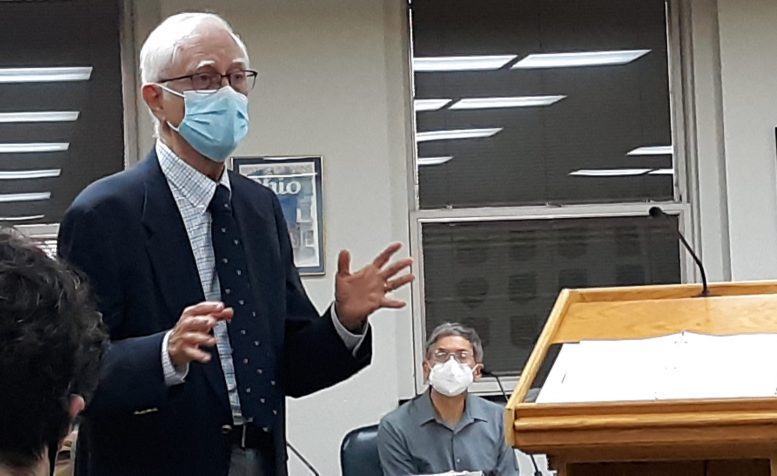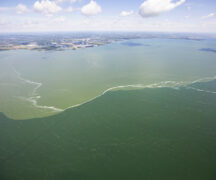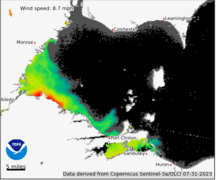By JAN LARSON McLAUGHLIN
BG Independent News
Bowling Green City Council was asked Monday evening to join an effort to protect Lake Erie.
Dr. Earl “Bud” Campbell, 85, who went to elementary school in the same building where city council meets, explained the urgency of action to help the lake’s health.
“I could be sitting at home drinking a single malt whisky,” but the issue is too critical, he told council.
The cities of Toledo, Oregon, Sandusky, and Luna Pier, along with Lucas County have already passed resolutions asking President Joe Biden for a Lake Erie executive order. The order would coordinate federal oversight and work with states, researchers, local governments and other stakeholders.
Those concerned about Lake Erie want action similar to President Barack Obama’s executive order dedicated to cleaning up the Chesapeake Bay, which put the federal government at the head of efforts previously led by the states.
Campbell, a member of the Lake Erie Waterkeeper Association, has long been concerned about the water quality in Lake Erie which has resulted in threats to public health.
He organized a water sampling project which showed the phosphorus and nitrogen levels that contribute to the growth of the algae. This information was subsequently submitted to the Ohio EPA.
Though billions of dollars have been spent to help agriculture reduce the amount of phosphorus running off fields into waterways and eventually into Lake Erie, the problems still exist, he said.
“We are way behind in phosphorus reduction,” Campbell said.
Campbell cited the increase in large animal farms – not small family farms – and the manure they produce as a big contributor to the harmful algal blooms in Lake Erie.
“It’s all pouring onto the land, and into the rivers, and causing problems,” he said.
More than 4 million acres of farmland, as well as many large animal operations, drain into the Maumee River, Campbell said. While the state’s new H2Ohio program is designed to reduce the amount of phosphorus making it to the lake, he said the state still is not keeping enough manure from being applied to fields.
“You and I are paying for someone to poison our water,” he said of the program intended to prevent phosphorus from getting to the lake.
Campbell praised the city of Bowling Green for its wise investments in infrastructure to provide quality water to consumers. While much of the region could not use public water systems for a period of four days in 2014 due to harmful algal blooms which turned Lake Erie green, Bowling Green’s water remained safe for consumption.
“You have a very good water supply,” with huge reservoirs and an “excellent” filtration system, he said to city officials.
Campbell, who lives in Perrysburg, grew up in Bowling Green, and graduated from Harvard University then medical school at the University of Rochester. Since the algal bloom crisis, he has given presentations on the public health issues and continues to research and educate the community on the inherent health risks.
On Monday, he took his pitch back to his hometown.
“I’m asking that you sign a resolution for Biden to do for Lake Erie what Obama did for the Chesapeake Bay,” he said.
Lake Erie is the 12th largest lake in the world by surface area – providing drinking water to 11 million people. Lake Erie brings more than $11 billion to the region’s economy and sustains more than 100,000 jobs.
Because Lake Erie is the shallowest and warmest of the Great Lakes, it also produces the most abundant fish populations, has one of the Great Lakes’ best bird watching areas and is one of the most biologically productive shorelines in the world.
According to the Lake Erie Waterkeeper Association, the contaminants that are largely responsible for pollution of Lake Erie are nutrients, in the form of nitrogen and phosphorus, and sediment. These pollutants come from many sources, including sewage treatment plants, city streets, development sites, commercial fertilizer and manure applied in agricultural operations, and deposition from the air onto the waters of Lake Erie and the lands of the watershed.





